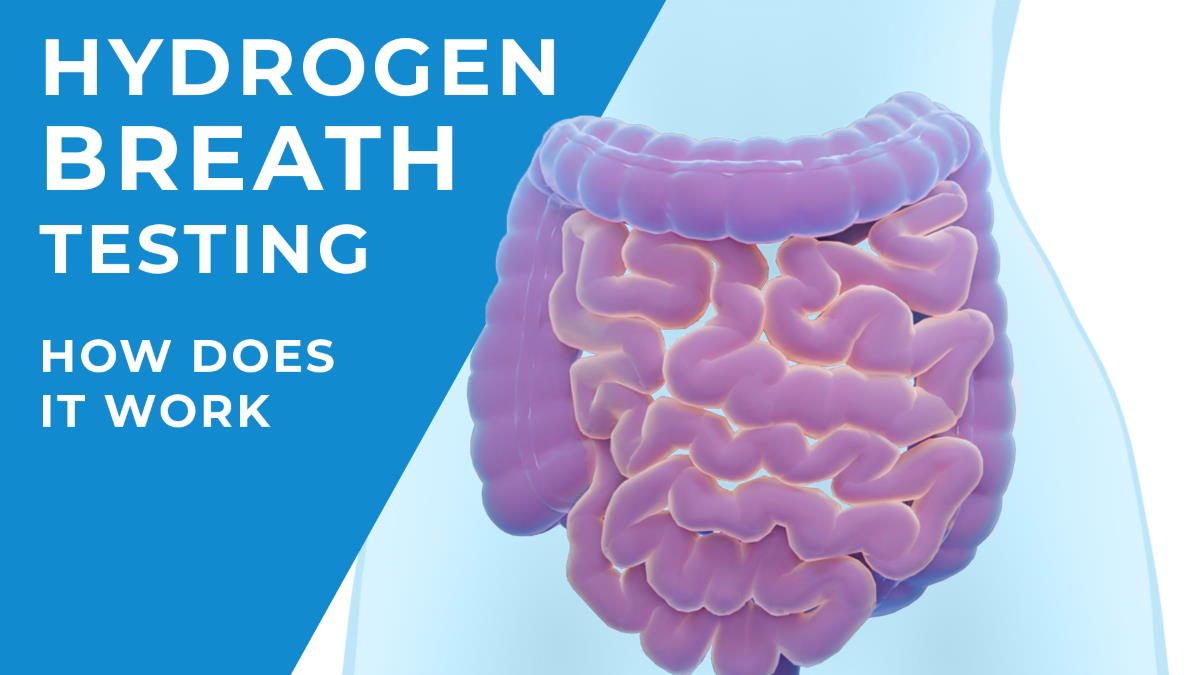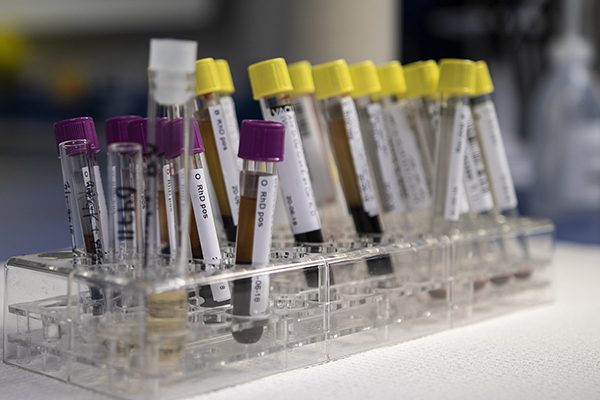Updated on 15 May 2020 with contributions from our Chief Scientist Dr Claire Shortt.
If you have ever looked for solutions to your digestive issues, you may have come across something called “hydrogen breath testing.” What is this test, why is this test done and how does it work?
To answer those questions, I will first need to do a quick review on how the digestive system works. As we all know, digestion starts in the mouth, using a combination of our teeth and digestive enzymes (in our saliva), eventually forming a bolus (ball-like mixture of food and salvia).
From here the food travels down our oesophagus (food-pipe) to the stomach. The bolus will soak in stomach acids from anywhere between 30 to 60 minutes; it really depends on the food eaten. This is done in an effort to kill most of the bacteria, viruses and parasites in our food.
The journey is only beginning…
After the stomach, the food bolus travels into the small intestine. Enzymes produced in the small intestine, and also in the liver and pancreas, break nutrients down to their smallest components so they can be absorbed into the bloodstream. This is where we absorb sugars, fats, proteins, vitamins and water. After that, the food then passes into the large intestine (also called the colon).
An important thing to understand is that every human’s large intestine is home to billions and billions of bacteria. When confined to the colon, these bacteria have many health benefits. Earlier I mentioned that sugars are absorbed when the food travels through the small intestine. Therefore, by the time the food enters the large intestine, there sometimes isn’t much sugar left in the remaining food bolus. However, any undigested sugars (e.g. fructose, lactose, sorbitol/mannitol, fructans etc) will be broken down by the resident bacteria through a process called fermentation.
When fermentation occurs in the colon, this causes the release of gases (e.g. hydrogen). When fermentation happens very rapidly it can lead to a build-up of gases. This can result in uncomfortable and sometimes painful digestive symptoms. This is particularly relevant to those with a sensitive gut (e.g. people with IBS). The symptoms may include bloating, abdominal pain and flatulence. Think of it like a balloon inflating inside your belly (ouch).
The gases created by fermentation are then absorbed into the bloodstream. Eventually, when blood reaches the lungs, these gases are expelled from the body in our breath.
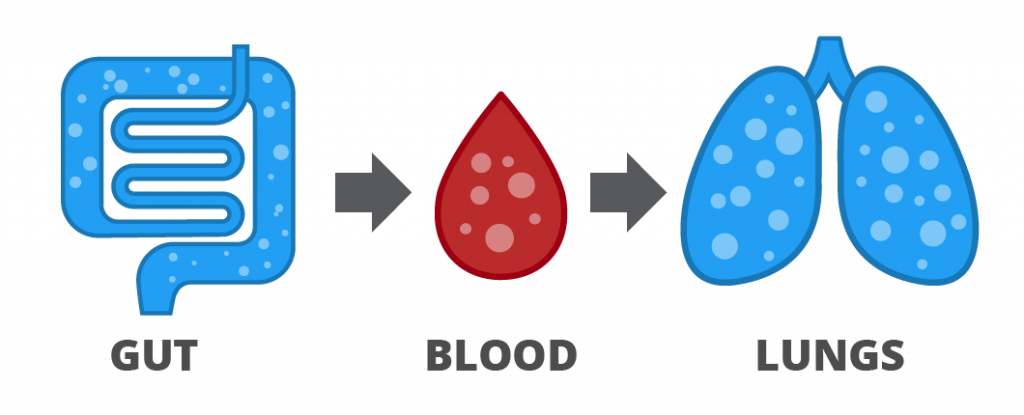
This is where hydrogen breath testing comes in. When the bacteria in our intestines are fermenting sugars we can measure the gas produced. From this, we can deduce when our bodies are not fully digesting food.
Understanding the hydrogen breath test
Human beings do not produce hydrogen. Imagine a scenario in which a person fasts for 12 hours, without eating food. In this scenario, the person’s digestive system is nearly empty of food and gases. If we were to take a sample of that person’s breath, we would detect very little hydrogen (or none) because there are no sugars in the gut for the bacteria to digest.
Scenario 1
Now imagine we give this person some sugar and it gets absorbed easily in their small intestine.
If they were to provide a breath sample every 15 minutes for 3 hours, their hydrogen levels will stay low. Why is that? Since the sugar given to them is absorbed easily, none of it enters the large intestine (where the bacteria live) and no fermentation would have taken place:

- Example of a “negative” hydrogen breath test
Scenario 2
Now let’s take the example of a person who does not digest sugars well (e.g lactose intolerance). This is a disorder in which a sugar called lactose is poorly digested in a person’s small intestine because they are not producing enough lactase (an enzyme which breaks lactose).
Lactose needs to be broken down into simpler sugars, so they can be readily absorbed by the body. Therefore in this scenario, the undigested lactose will travel to the large intestine. Once there, it is fermented by the bacteria, releasing gases (e.g hydrogen).
Depending on the amount of gas produced and their sensitivity to it, they may experience symptoms (e.g bloating, cramping and flatulence). Our digestive systems are unique and we all can tolerate different levels of gas. This is why it is important to keep track day-to-day. Our ability to digest foods, as well as how our body responds, can change.
Let’s imagine this lactose intolerant person eats a large bowl of vanilla ice cream. If a breath sample were to be taken from this person every 15 minutes for 3 hours, the graph will look quite different to the one before. This time, we would be able to detect the gases created by the bacteria in the gut:
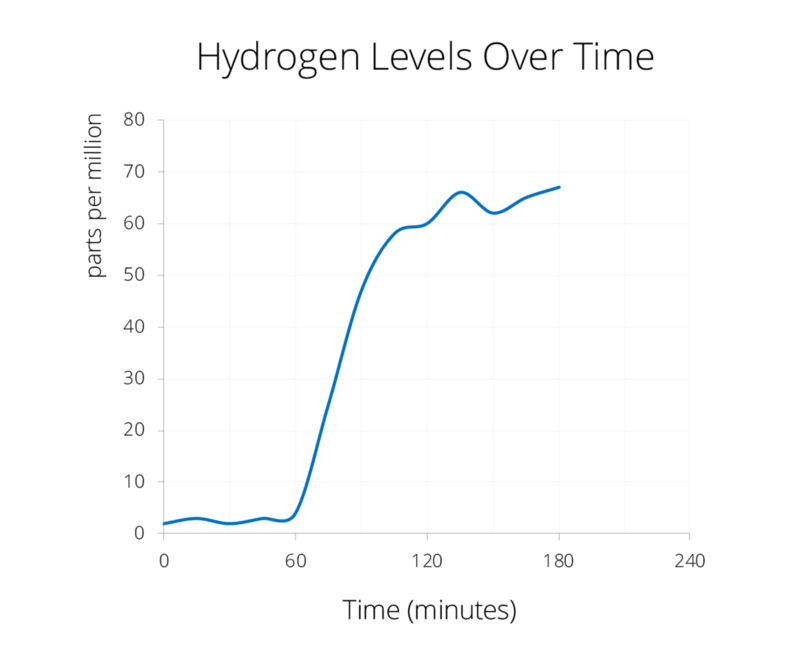
- Example of a “positive” hydrogen breath test suggestive of bacterial fermentation
I’ll break this down so that you can understand what the graph is telling us. Remember that human beings do not produce hydrogen. Therefore, if we see a rise in hydrogen after eating food, we can attribute this rise to bacterial fermentation in the gut. Let’s take another look at that last hydrogen breath reading, this time with some notes added in:
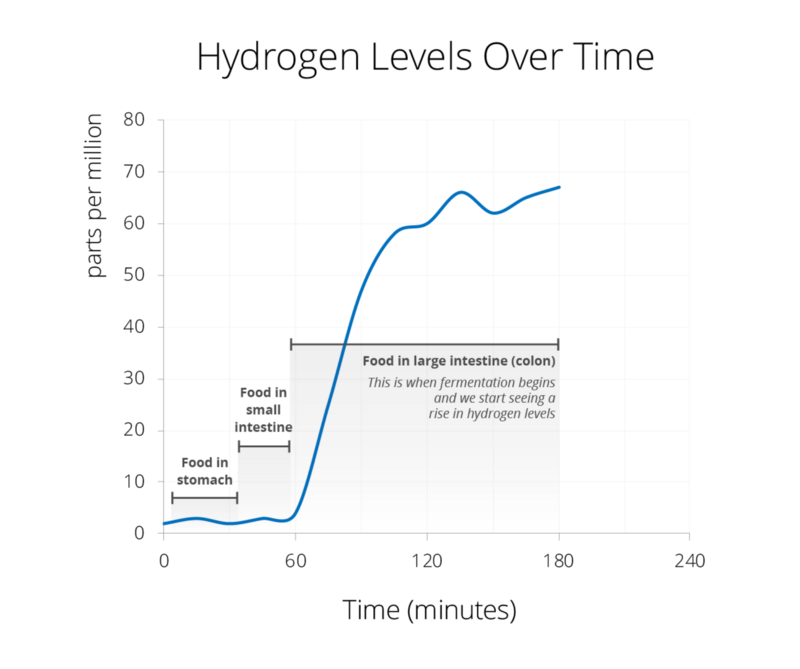
- Breakdown of a “positive” hydrogen breath test
As you can see, the dramatic rise in hydrogen about an hour after eating signifies bacterial fermentation in the gut. Once these products of fermentation dissolve into the bloodstream and travel to the lungs, they can be detected by a hydrogen breath tester (like the FoodMarble AIRE). This is how doctors diagnose their patients with lactose intolerance, fructose intolerance and a number of other disorders.
Small Intestinal Bacterial Overgrowth
In addition to detecting food intolerances, breath testing has also been used to detect bacterial infections in the gut. In particular, some gastroenterologists use breath testing to diagnose a disorder called SIBO (Small Intestinal Bacterial Overgrowth).
I hope I have made breath testing a little more clear for you. Please get in touch with any comments, feedback or questions!
FoodMarble AIRE is the world’s first personal hydrogen breath tester. It is a pocket-sized breath analysis device. It helps people with chronic digestive issues determine the foods that work best with their digestive system.
Read user reviews of FoodMarble AIRE on Trustpilot
To learn more about FoodMarble, visit foodmarble.com or follow us on


